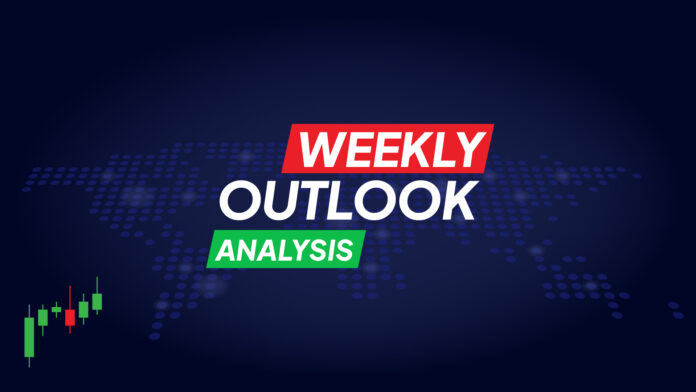Key points to watch out for:
- U.S. CPI and Fed data to shape dollar trajectory
- Will the Bank of Japan reveal the possibility of another rate hike?
- Pound traders await UK jobs and GDP figures
- RBA rate hike expectations fade in light of AU jobs and China CPI data
Focus on the Fed and US CPI data
With the resumption of declining US inflation trends for April and the disappointing ISM manufacturing PMI for May, investors remain confident that the Federal Reserve will start lowering interest rates sometime this year. They currently estimate about two quarter-point cuts between now and December, with a close to 80% chance that the first will be in September.
As traders attempt to predict when Fed officials will decide on rate cuts, they are likely looking ahead to the FOMC decision on Wednesday, June 12 this week. It will be one of the most significant meetings, supported by updated economic projections along with a new dot plot.
Keeping in mind the mantra of policymakers to “hike for longer,” market players are almost certain that the Committee will refrain from action at the meeting. Consequently, the focus will be on the decision and mainly on the new interest rate projections. The March estimate pointed to three cuts of about 25 basis points this year, with an additional three cuts projected by 2025.
That said, given that most policymakers indicate they are not eager to begin lowering borrowing costs, there is a possibility of an upward revision. However, a projection of two rate cuts this year may not be enough to help lift the dollar, as the market seems to already be anticipating this. For the dollar to take off on a strong recovery path, most Fed officials will likely have to signal a significant four-rate cut this year.
The corresponding U.S. CPI data for May will be released a few hours before the decision, and a persistent set of numbers could give dollar bulls a chance to rally, even if the Fed’s decision does not meet expectations. After all, market players will be aware that the CPI numbers will not add to policymakers’ forecasts. That said, Fed Chairman Jerome Powell is likely to be asked questions about the data at the press conference. The PPI figures are due on Thursday, June 13.
When is the next Bank of Japan rate hike expected?
On Friday, June 14, the focus will shift to the Bank of Japan (BoJ). At its most recent meeting on April 26, the bank kept its benchmark rate range between 0% and 0.1%, as expected. Although the Bank upgraded its inflation estimate, it did not indicate a reduction in its bond purchases and refrained from signaling a firm intention to raise interest rates again in the near term. This led to a weakening of the yen and two government interventions in the following days.
However, the currency again resumed its decline shortly after the interventions, and the larger-than-expected first-quarter economic contraction created hurdles for the next rate hike. Investors continue to give a 67% chance of a further 10 basis point hike by July. However, if the Bank’s stance is unclear, traders could be disappointed and the yen could extend its decline and return to its recent lows.
UK jobs and GDP data will move the pound
The British pound will also be in the spotlight this week, as Tuesday, June 11, and Wednesday, June 12, will bring the UK employment report and the monthly GDP rate for April.
April’s higher-than-expected UK inflation figures, especially given the persistence of underlying price pressures, caused investors to reduce their Bank of England rate-cut bets. They currently estimate rate cuts of around 40 basis points for the remainder of the year, and the chance of a first quarter-point cut in September is 65%.
Another month of strong wage growth and GDP data that affirms the view that the UK economy entered the second quarter on a solid footing could diminish the likelihood of a rate cut in September and therefore help the pound to rise.
However, with a general election due soon, pound traders are likely to be more cautious as the date approaches. The Labour Party has positioned itself as fiscally responsible, and therefore, should they win, they could make the Bank of England’s job easier, giving it the potential to cut interest rates much earlier than currently estimated.
Inflation in China, employment in the AU
China’s CPI and PPI figures will be released on Wednesday, June 12, while Australia’s employment report will be released on Thursday, June 13.
Although weaker-than-expected first-quarter Australian GDP data suppressed the few bets on an RBA hike, Australia’s central bank continues to be considered one of the most aggressive among the majors, as investors are only forecasting a 50% chance of a quarter-point RBA cut by 2024.
Thus, a rebound in Australian employment combined with higher-than-expected Chinese inflation should drive the Australian dollar higher as investors become more convinced that the RBA is unlikely to cut rates this year.



